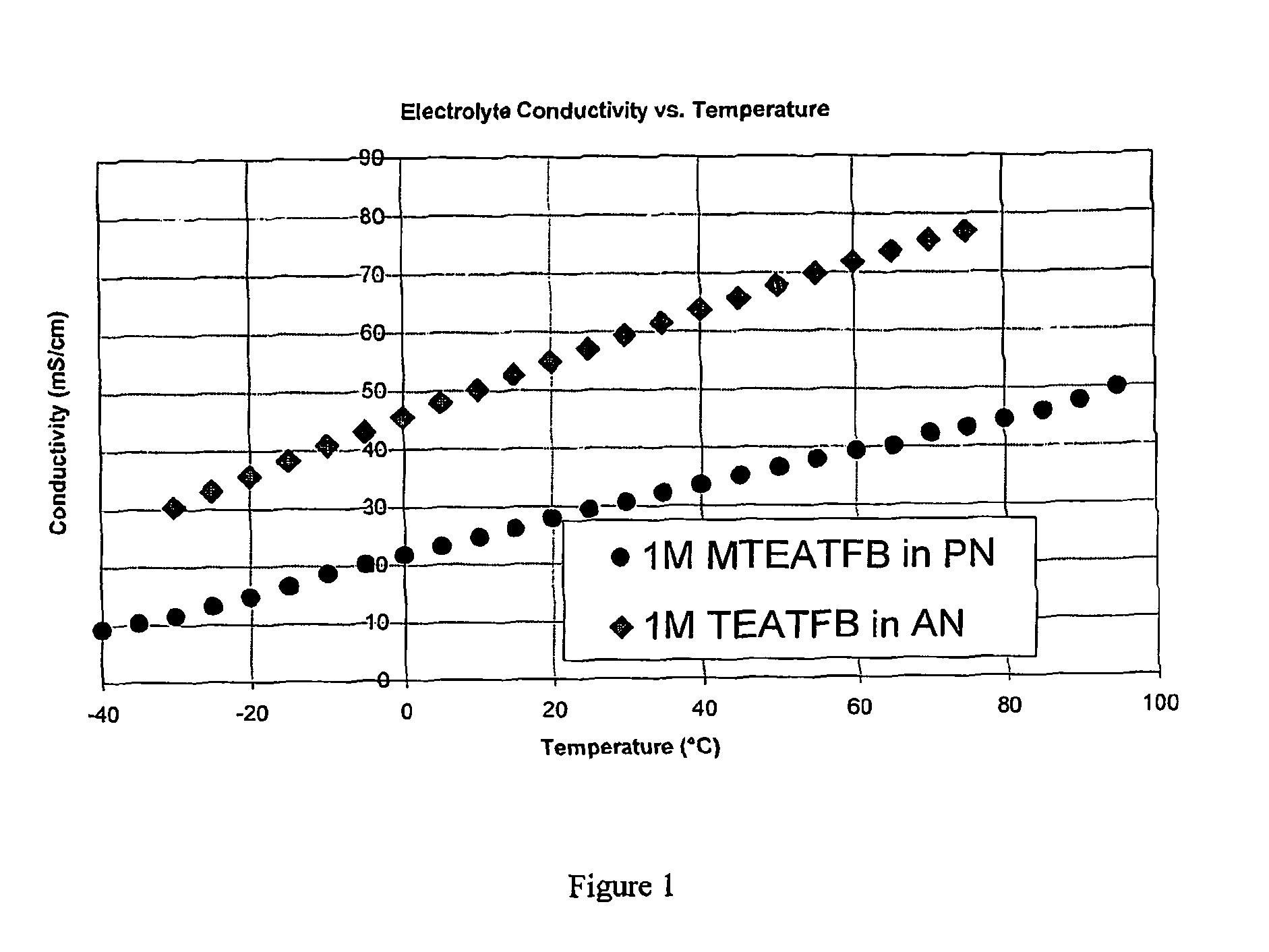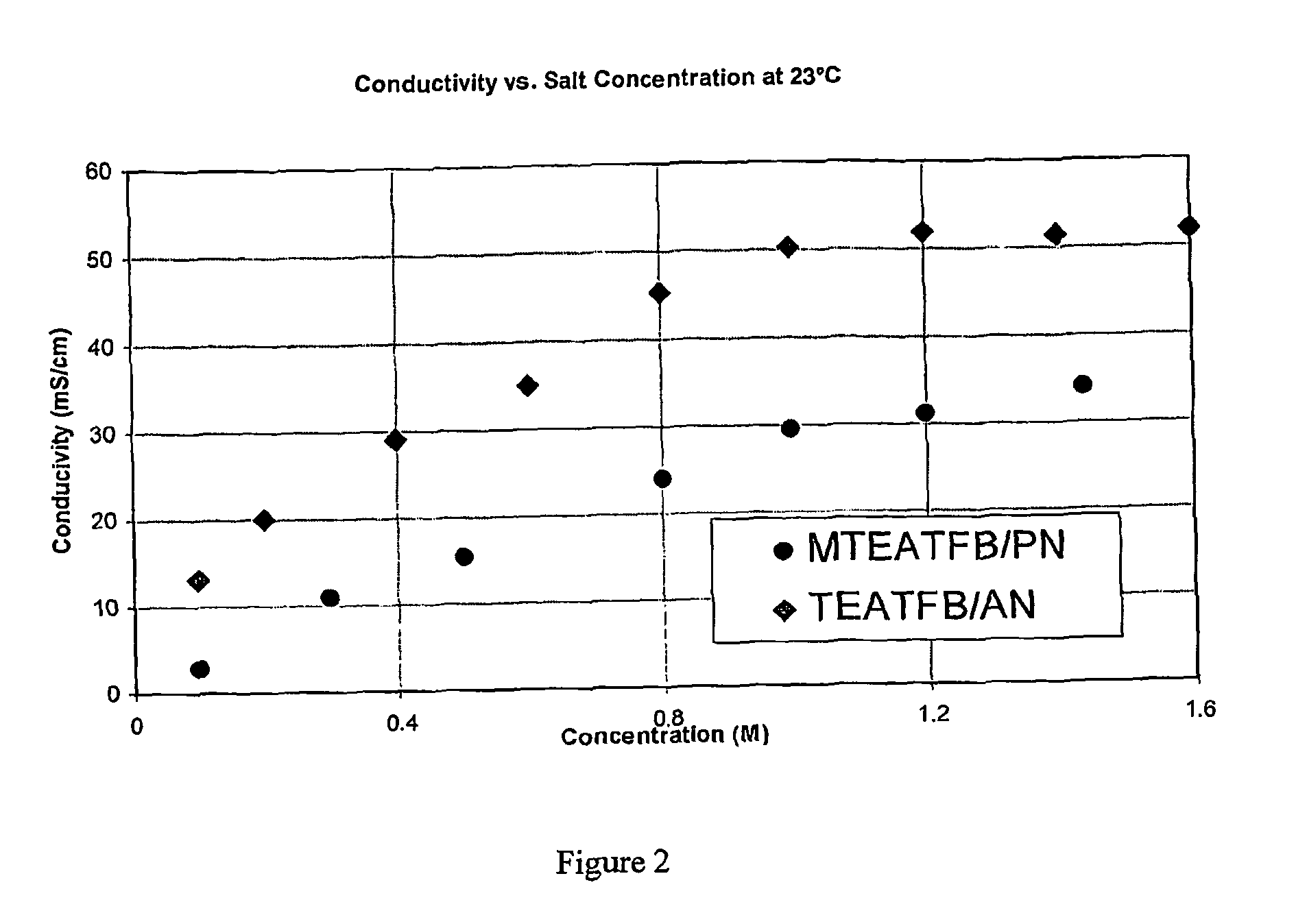Electrolyte
a technology of electrolyte and elastomer, which is applied in the field of electrolyte, can solve the problems of requiring a higher load, and reducing the stability of the solvent, so as to achieve the effect of improving stability and operating characteristics
- Summary
- Abstract
- Description
- Claims
- Application Information
AI Technical Summary
Benefits of technology
Problems solved by technology
Method used
Image
Examples
example 1
[0116]The conductivity of 1M MTEATFB in PN was measured at a range of temperatures and compared with corresponding values for 1M TEATFB in AN. The results are shown in FIG. 1, where it can be seen that the conductivity of the electrolyte MTEATFB in PN is lower than that for TEATFB in AN across a wide range of temperatures.
example 2
[0117]The conductivity of MTEATFB in PN at 23° C. was measured at a variety of concentrations and again compared with corresponding values for TEATFB in AN at 23° C. The results are shown in FIG. 2, where it can be seen that the conductivity of MTEATFB / PN is dependent upon MTEATFB concentration. For any given salt concentration, MTEATFB / PN is lower than TEATFB in AN.
[0118]Supercapacitors were prepared as described in the experimental section above. One group of supercapacitors was filled with the state of the art electrolyte solution, a solution of 1M TEATFB in acetonitrile. Another group of supercapacitors was filled with 1M MTEATFB in propionitrile.
example 3
[0119]Effective Capacitance (Ce) for two identical dual-cell devices discharged from 4.5V at 100 mA was determined, where the only difference was the electrolyte. The results are shown in FIG. 3. The figure is limited to the time range 0.001 to 10 seconds, but it can be appreciated that data extends to both shorter and longer time scales. An initial voltage of 4.5V was chosen to allow direct comparison of the MTEATFB / PN device with the less voltage stable TEATFB / AN device.
[0120]The ESR rise rates of a MTEATFB / PN supercapacitor was compared with that of a corresponding TEATFB / AN supercapacitor at a variety of temperatures.
PUM
| Property | Measurement | Unit |
|---|---|---|
| voltage | aaaaa | aaaaa |
| temperatures | aaaaa | aaaaa |
| temperatures | aaaaa | aaaaa |
Abstract
Description
Claims
Application Information
 Login to View More
Login to View More - R&D
- Intellectual Property
- Life Sciences
- Materials
- Tech Scout
- Unparalleled Data Quality
- Higher Quality Content
- 60% Fewer Hallucinations
Browse by: Latest US Patents, China's latest patents, Technical Efficacy Thesaurus, Application Domain, Technology Topic, Popular Technical Reports.
© 2025 PatSnap. All rights reserved.Legal|Privacy policy|Modern Slavery Act Transparency Statement|Sitemap|About US| Contact US: help@patsnap.com



